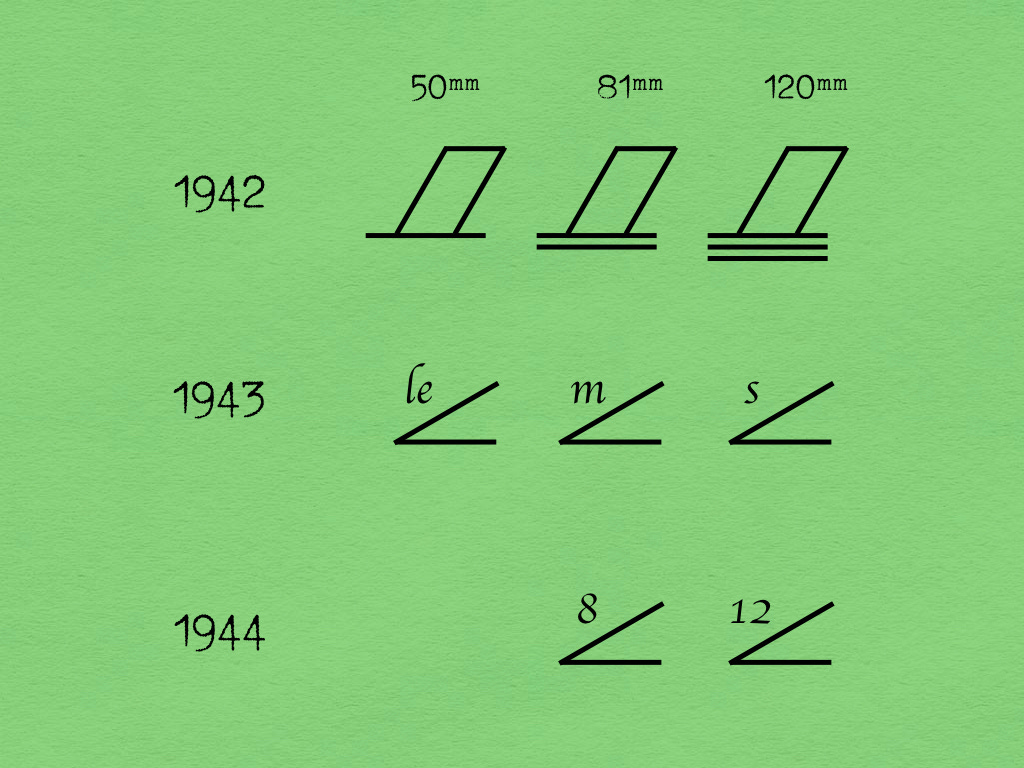Depicting Mortars
Tactical Symbols
Between 1919 and 1935, the light Minenwerfer of the German Army fulfilled two distinct functions. When configured for high angle fire, they served as mortars. When employed in the direct-fire mode, they did the work of infantry guns. Nonetheless, when German soldiers depicted these dual-purpose weapons (or units armed with them) on a map or diagram, they used variations of the symbol used in the days when Minenwerfer were exclusively employed as trench mortars.
In the middle years of the 1930s, the German Army replaced its Minenwerfer with a combination of purpose-built infantry guns and mortars modeled after the drop-fired design of Sir Wilfred Stokes. This parting of ways created a need for new tactical symbols, each of which would emphasize the definitive role of one of the new weapon it depicted.
In the case of mortars, the new tactical symbol reversed the relationship between barrel and base that had characterized the hieroglyph for Minenwerfer. This replacement of a boxy rectangle with a thin line resulted in a symbol that was, at once, more elegant than its predecessor and easier to modify. In particular, it made possible a simple system for indicating the size of the mortar being represented. Thus, when the abstracted barrel rested upon a single line, the symbol represented a light (50mm) mortar. When there were two lines, the weapon in question was a medium (81mm) mortar. Moreover, when 120mm mortars began to appear, the requisite hieroglyph was easily created by the placement of three lines below the parallelogram.
In 1943, the German Army reformed its system of tactical symbols, replacing pictures that took time to draw with simpler combinations of lines and circles. Thus, the “big barrel/little base” symbol for mortar gave way to an open-ended triangle. At the same time, the system of using lines to indicate size was replaced by the use of abbreviations for the words light (leichte), medium (mittlere), and heavy (schwere.) In 1944, a second reform replaced the abbreviations with numerals that indicated the caliber (as measured in centimeters) of the mortar.1
The reform of 1943 removed the “big barrel/little base” symbol from the German graphical lexicon. Soon thereafter, however, the freshly-formed Israeli Defense Force, which was well supplied with soldiers who appreciate the value of mortars, revived the hieroglyph.2
For Further Reading: Readers interested in the tactical symbols used by German military draughtsmen during World War II will want to consult the guides to such hieroglyphs that can be found on the website of Leo Niehorster.
The row that shows symbols from 1944 lacks a glyph for 50mm or 60mm light mortars because I have yet to see one in a document.
I discovered this somewhat ironic revival while looking at Israeli maps from the October War of 1973.




